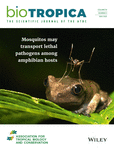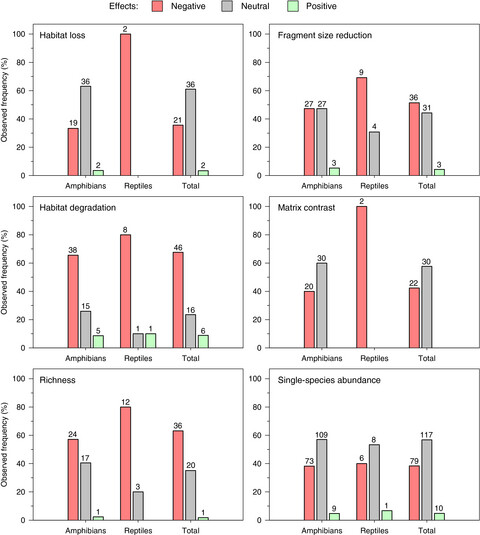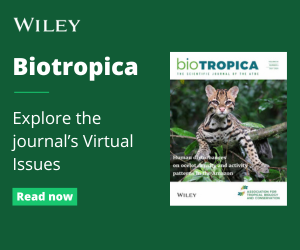Journal list menu
Export Citations
Download PDFs
ISSUE INFORMATION
INSIGHT
Midges not only sucks, but may carry lethal pathogens to wild amphibians
- Pages: 722-725
- First Published: 04 March 2021
REVIEWS
A meta-analysis of the effects of fragmentation on the megadiverse herpetofauna of Brazil
- Pages: 726-737
- First Published: 20 April 2021
A meta-analysis of tropical land-use change effects on the soil microbiome: Emerging patterns and knowledge gaps
- Pages: 738-752
- First Published: 19 April 2021
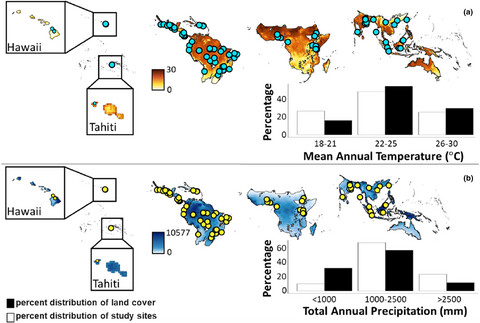
We identified 83 published paired studies that reported data on microbial biomass, abundance, composition, and enzyme activity under representative land-use changes in the tropics. We found that microbial biomass, abundance, and functions were affected by land-use change. Also, we found that published studies were not representative of the range of biophysical conditions observed in the tropics.
ORIGINAL ARTICLES
Human perturbations reduce dung beetle diversity and dung removal ecosystem function
- Pages: 753-766
- First Published: 28 April 2021
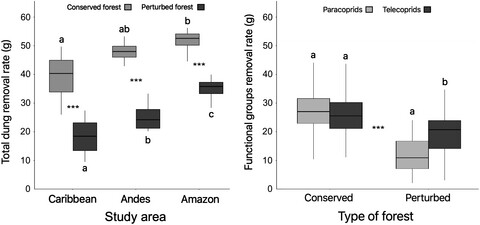
Conducting an experimental manipulative field study, we evaluate the effect of human disturbance on dung beetle diversity and dung removal rates. We provide evidence that dung removal rates, abundance, and functional group richness were lower in perturbed forests compared to conserved forests and dung removal increased with abundance, species richness, and functional group richness. Our results demonstrate a negative effect of human perturbation on dung beetle richness, abundance, and dung removal rates, and also that dung beetle diversity and functional group richness enhance dung removal rates.
On the floristic identity of Amazonian vegetation types
- Pages: 767-777
- First Published: 24 March 2021
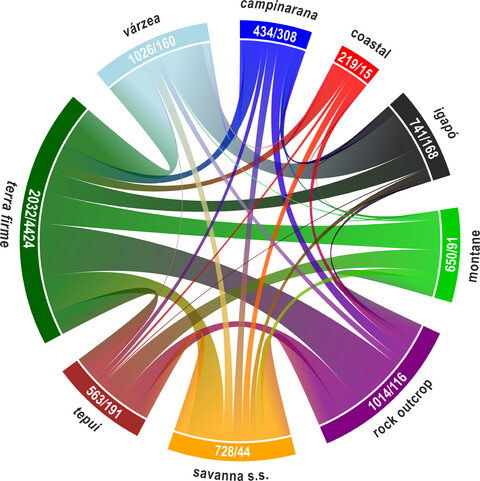
We find that the traditional classification of Amazonian vegetation types is consistent with quantitative patterns of tree species composition. High elevations and the harshest extremes of substrate-related factors underpin the floristic segregation of environmentally “marginal” vegetation types and terra firme forests with climatic factors being relatively unimportant. These patterns hold at continental-scales, with sites of similar vegetation types showing higher similarity between them regardless of geographic distance, which contrasts with the idea of large-scale variation among geographic regions (e.g., between the Guianan Shield and southwestern Amazon) representing the dominant floristic pattern in the Amazon. Two thirds of terra firme tree species are restricted to this vegetation type, while among marginal vegetation types, only white-sand forests (campinaranas) have a substantial proportion of endemic species, with other vegetation types sharing large numbers of species.
Ephemeral habitat supports high fish α-diversity and β-diversity during drought in a subtropical semiarid wetland
- Pages: 778-785
- First Published: 09 March 2021
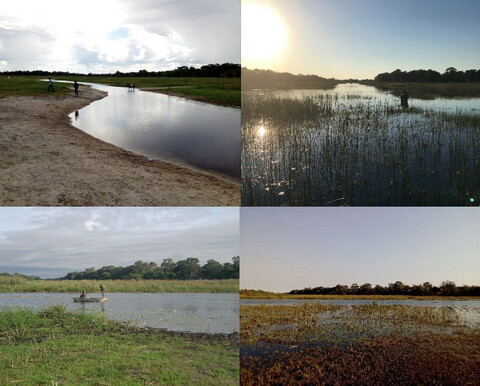
We investigated how fish α- and β-diversity patterns in intermittent channels in the lower reaches of the Okavango Delta respond to seasonal flooding and drought. Under low-flow conditions, ephemeral habitat had higher α-diversity, and this was influenced by a combination of fish aggregation and apparent transient legacy effects as habitat patches became smaller and more isolated. Our findings support hydrology as a major factor regulating diversity patterns in intermittent rivers of a major wetland in a semiarid region of subtropical Africa.
Assessing the importance of reproductive modes for the evaluation of altitudinal distribution patterns in tropical frogs
- Pages: 786-797
- First Published: 07 March 2021
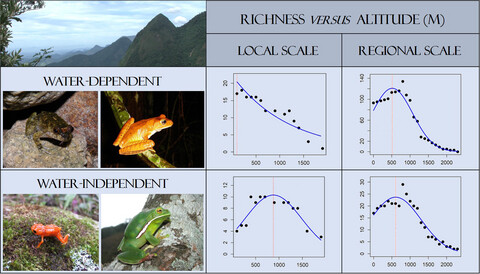
We evaluated the relationship between frog richness and elevation along local and regional altitudinal gradients within the Brazilian Atlantic Forest. For the local dataset, richness decreased with increasing altitude for species with water-dependent reproductive modes, whereas water-independent species presented greater richness at intermediate altitudes. For the regional dataset, richness peaked at intermediate altitudes for both groups. Our findings indicate a strong influence of reproductive mode on the altitudinal distribution of tropical frogs, and that distribution patterns may vary according to the spatial scale considered.
Upward shifts in elevational limits of forest and grassland for Mexican volcanoes over three decades
- Pages: 798-807
- First Published: 10 March 2021
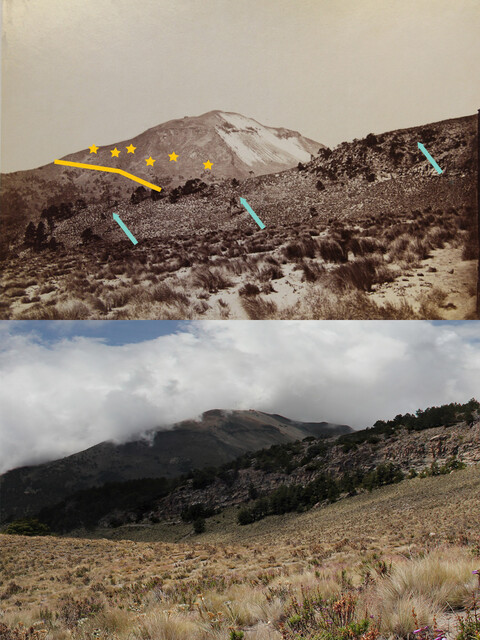
We showed and provide a set of geographic summaries related to global change implications for top mountain ecosystems in Mexico. We found and documented upward vegetation shifts averaging >490 m in elevation over three decades. Treelines showed upward shifts in the highest volcanoes of Mexico, showing dramatic changes in some volcanoes (e.g., Sierra Negra).
Dung beetle activity had no positive effect on nutrient concentration or performance of established rainforest seedlings
- Pages: 808-819
- First Published: 07 March 2021
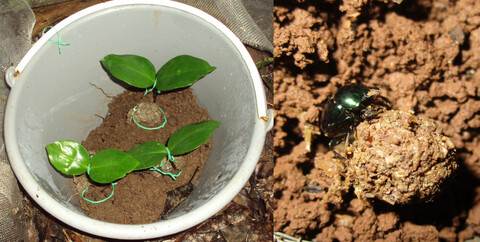
We carried out field experiments with seedlings of six rainforest tree species, which were subject to: (a) feces and access to dung beetles, (b) feces and dung beetles excluded, and (c) no feces or beetles. Dung burial by beetles did not increase foliar nutrient concentrations, seedling survival, or growth in any of the species. We reach two main conclusions: (i) Results from other systems (e.g., greenhouse experiments, studies in temperate grasslands) cannot be extrapolated to tropical forests; (ii) Much remains to be investigated about the effects that dung beetle activity may have on tropical forest soils, and what the consequences might be for plants and other ecosystem components.
Geography of roadkills within the Tropical Andes Biodiversity Hotspot: Poorly known vertebrates are part of the toll
- Pages: 820-830
- First Published: 31 March 2021
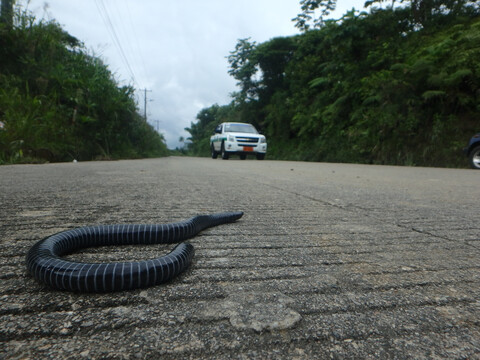
We analyzed wildlife roadkill patterns along a road network between tree protected areas in the Andes of Ecuador. Roadkills included poorly known small and endemic vertebrates, such as caecilians (Gymnophiona) and fossorial snakes (Atractus spp.). Most roadkills occurred in areas where roads crossed pasturelands adjacent to natural habitat. We believe that bridges that are crossing rivers could be functioning as ecological traps and should be managed.
Temporal interactions and moon illumination effect on mammals in a tropical semievergreen forest of Manas National Park, Assam, India
- Pages: 831-845
- First Published: 15 February 2021

We investigated the activity patterns of tropical mammals in terms of effects of lunar cycles as manifestations of interactions amongst dominant species over subdominant counterparts. Increased activity under brighter conditions (visual acuity hypothesis), as well as an increased activity under darker conditions (dominant predator avoidance hypothesis), was tested. We found that temporal segregation facilitates the coexistence of the tropical carnivore community. Predators synchronize their activities with those of their potential prey. Moonlight strongly influenced the foraging patterns of prey species. The activity of both large- and small-sized prey was higher during the full moon nights. Temporal partitioning within and amongst trophic levels play an important role in facilitating carnivore coexistence.
Net benefits of a mutualism: Influence of the quality of extrafloral nectar on the colony fitness of a mutualistic ant
- Pages: 846-856
- First Published: 08 February 2021
Active modification of cavity nest-entrances is a common strategy in arboreal ants
- Pages: 857-867
- First Published: 02 March 2021
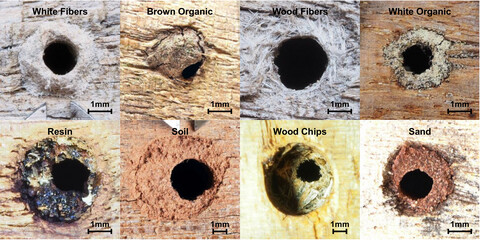
Most tropical arboreal ant species nest in tree cavities, often produced by wood-boring beetles, which can be in live or dead wood and represent long-lasting and highly defensible nesting resources. Here, we conduct the first systematic study of nest-entrance modification in an arboreal ant community using field experiments. Overall, we show that nest-entrance modification is a widespread, active, and context-dependent strategy in the nesting ecology of arboreal ants.
Variation in leaf temperatures of tropical and subtropical trees are related to leaf thermoregulatory traits and not geographic distributions
- Pages: 868-878
- First Published: 13 January 2021
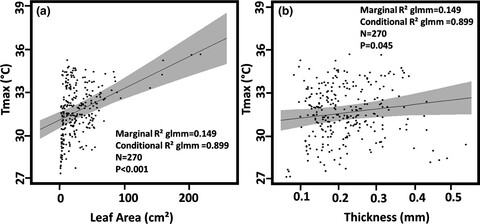
It is important to understand the variation in leaf thermoregulatory traits and temperatures in order to predict how individual species will be impacted by global warming. We found that maximum leaf temperature was positively correlated with leaf area, and rate of leaf warming was negatively correlated with water content per leaf area. We then tested the relationships between the species’ leaf thermal properties and their climatic niches/distributions, but we found no significant associations. These results call into question the use of regional air temperatures to model plant physiological and demographic performance.
Decay classes of coarse woody debris in a lowland Dipterocarp forest: implications for volume, density, and carbon estimates
- Pages: 879-887
- First Published: 29 March 2021
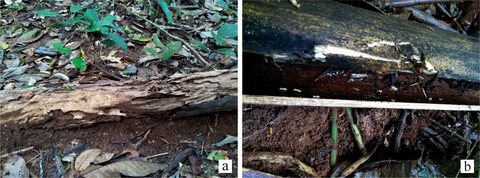
This study first time considered the relationship between decay class, termite infestation, wood density, and C content of coarse woody debris in a lowland Dipterocarp forest. Microbial- and termite-driven decomposition were separated in the suggested decay classification system. The bulk density of wood of the 1st, 2nd, 3rd, 4th, and 5th decay classes averaged 0.628, 0.501, 0.332, 0.169, and 0.071 g cm−3, respectively. The total C content in CWD decreased with decomposition and averaged 0.259, 0.199, 0.121, 0.037, and 0.009 g cm−3 in the CWD of the 1st, 2nd, 3rd, 4th, and 5th decay classes, respectively.
The effects of tree cover and soil nutrient addition on native herbaceous richness in a neotropical savanna
- Pages: 888-895
- First Published: 22 March 2021
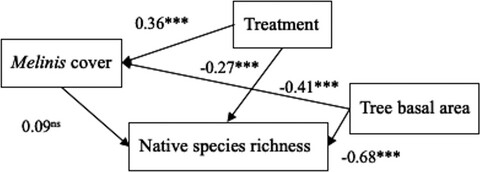
In a savanna-forest boundary in the Brazilian Cerrado, soil nutrient addition (treatment) and tree basal area affected the richness of flowering herbaceous species. We show that while soil nutrient addition increased cover of the invasive grass, Melinis minutiflora, it also decreased the richness of herbs. Tree density had a strong negative effect on both Melinis cover and herbaceous richness. Our results reveal that high-nutrient availability hampers the restoration of a diverse, native herbaceous layer in anthropogenic savannas, while tree encroachment is a threat to diversity in old-growth savannas.
Interspecific variation in post-disturbance growth responses of a savanna tree community and its implications for escaping the fire trap
- Pages: 896-905
- First Published: 04 March 2021
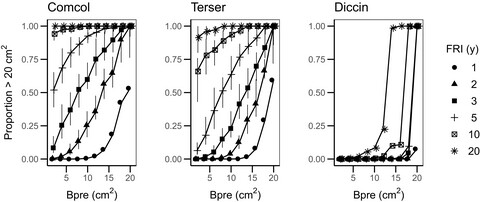
Is it better for savanna trees to invest in a few tall stems that might allow escape from the next disturbance event, or to produce many small stems that might allow greater investment in photosynthetic biomass and replenishment of stored C? To date, few studies of resprouting have examined the strategies of more than a handful of species at a time, so it is difficult to draw inferences across entire communities about “growing tall” vs. “growing wide” as a functional trait. We hypothesized that fast-growing species that tend to invest in relatively tall stems should follow a “tall” strategy, and vice versa, and our results support this hypothesis.
Elevation and leaf litter interact in determining the structure of ant communities on a tropical mountain
- Pages: 906-919
- First Published: 08 February 2021
Leaf litter decomposition in tropical freshwater swamp forests is slower in swamp than non-swamp conditions
- Pages: 920-929
- First Published: 22 January 2021
Characterizing primate home-ranges in Amazonia: Using ferns and lycophytes as indicators of site quality
- Pages: 930-940
- First Published: 04 March 2021
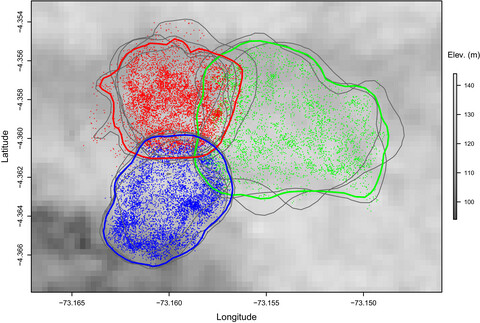
We applied an approach based on indicator plant species to estimate and map soil base cation concentration and its variability at Estación Biológica Quebrada Blanco. We found that soils in the study area are relatively cation-poor, in a western Amazonian context, which probably translates into low primary productivity. Differences were observed among the home-range sizes of three tamarin groups when relating them to cation concentration, illustrating the usefulness of the method for detailed habitat mapping.
High spatial resolution mapping identifies habitat characteristics of the invasive vine Antigonon leptopus on St. Eustatius (Lesser Antilles)
- Pages: 941-953
- First Published: 10 March 2021
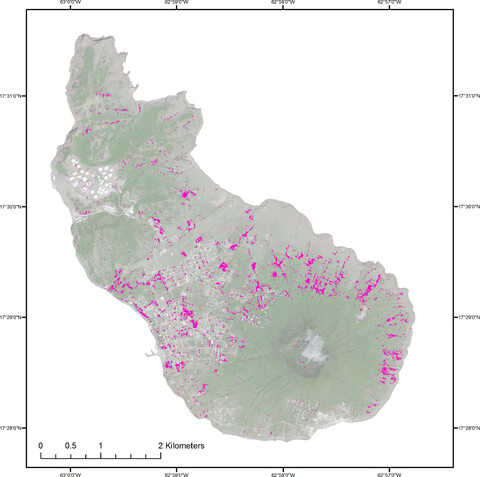
The aim of this study was to obtain a detailed distribution map of the invasive vine A. leptopus, which poses a biodiversity concern on the Caribbean island St. Eustatius. A satellite image of high spatial resolution (2m by 2m) was classified using a Support Vector Machine algorithm. The result suggest that the species currently covers 3.18 % of the island and reveals distinct associations with specific eco-morphological conditions.
Spatial relationships between spiders and their host vascular epiphytes within shade trees in a Mexican coffee plantation
- Pages: 954-965
- First Published: 25 March 2021
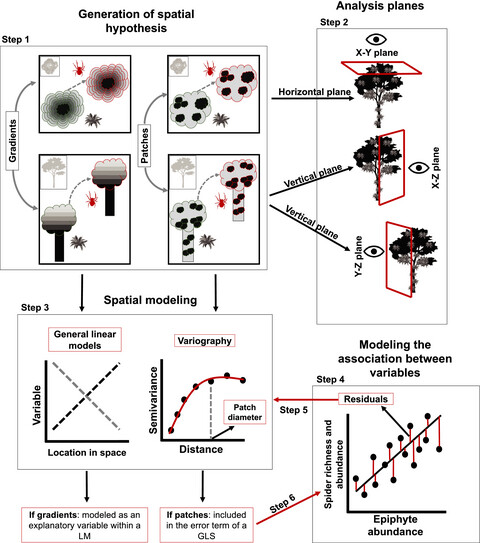
We used a spatially explicit approach to examine if the richness and abundance of epiphyte-dwelling spiders have a positive association with epiphyte abundance within trees and if spiders (richness and abundance) show the same patterns of spatial distribution as the epiphytic habitat. Our findings demonstrate that the spatial distribution of epiphyte-dwelling spider communities, may partly be explained by the distribution patterns of their host plants. However, other environmental and biotic factors, not associated with epiphyte communities, are likely to be responsible for the remaining spatial patterns of spider distribution.
Seasonal isotopic niche of a rodent: High between-individual variation but no changes in individual niche width during the rich-resource period
- Pages: 966-975
- First Published: 29 January 2021
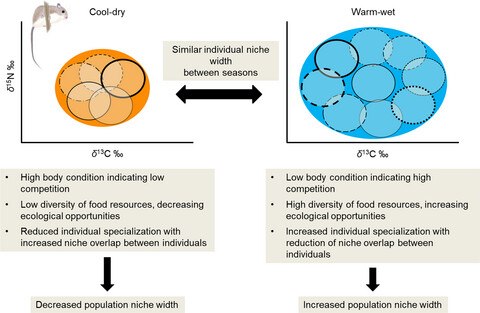
We found that the isotopic niche width of a Neotropical rodent (Rhipidomys macrurus) population is wider in the rich-resource period (warm–wet season) in comparison with the low-resource period (cool–dry season). This increase involves only between-individual variation, not requiring changes in individual niche width. We propose that the combination of ecological opportunity (high resource diversity) and greater competition (as indicated by a mean negative residual body mass) in the rich-resource period leads to expansion of the population trophic niche width via individual specialization.




